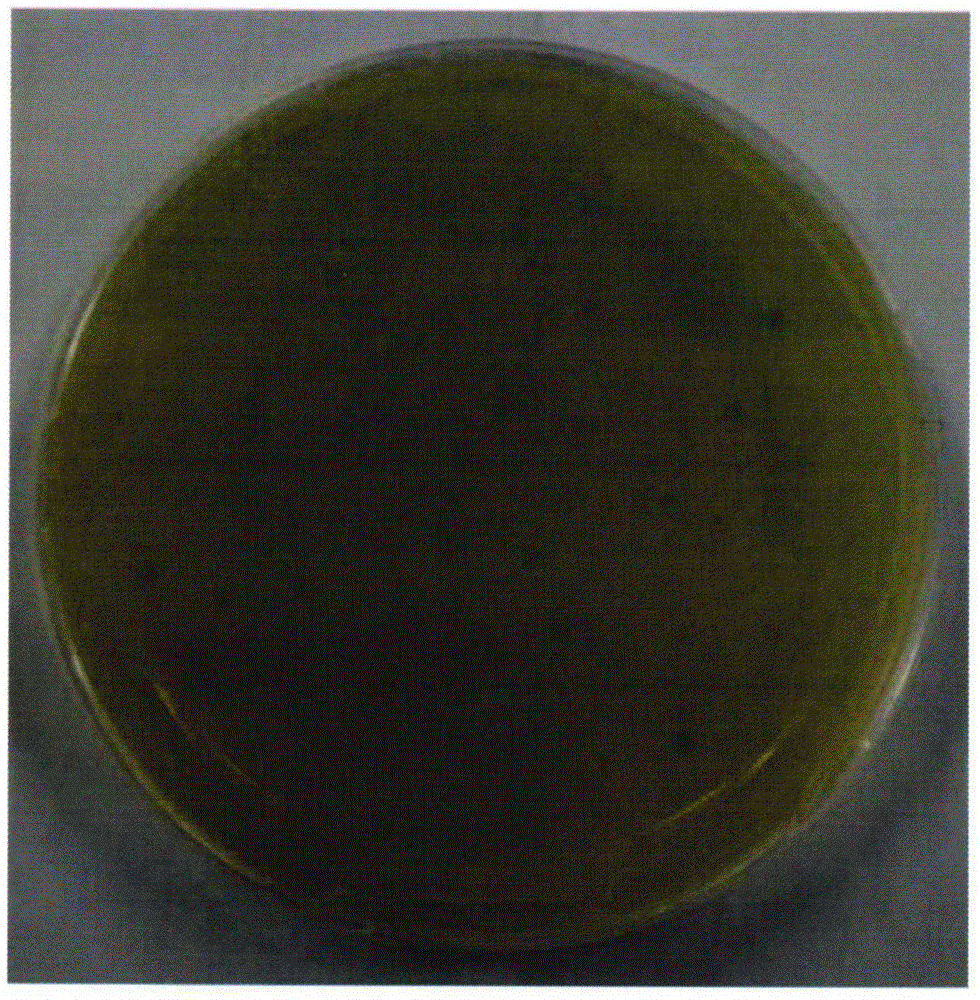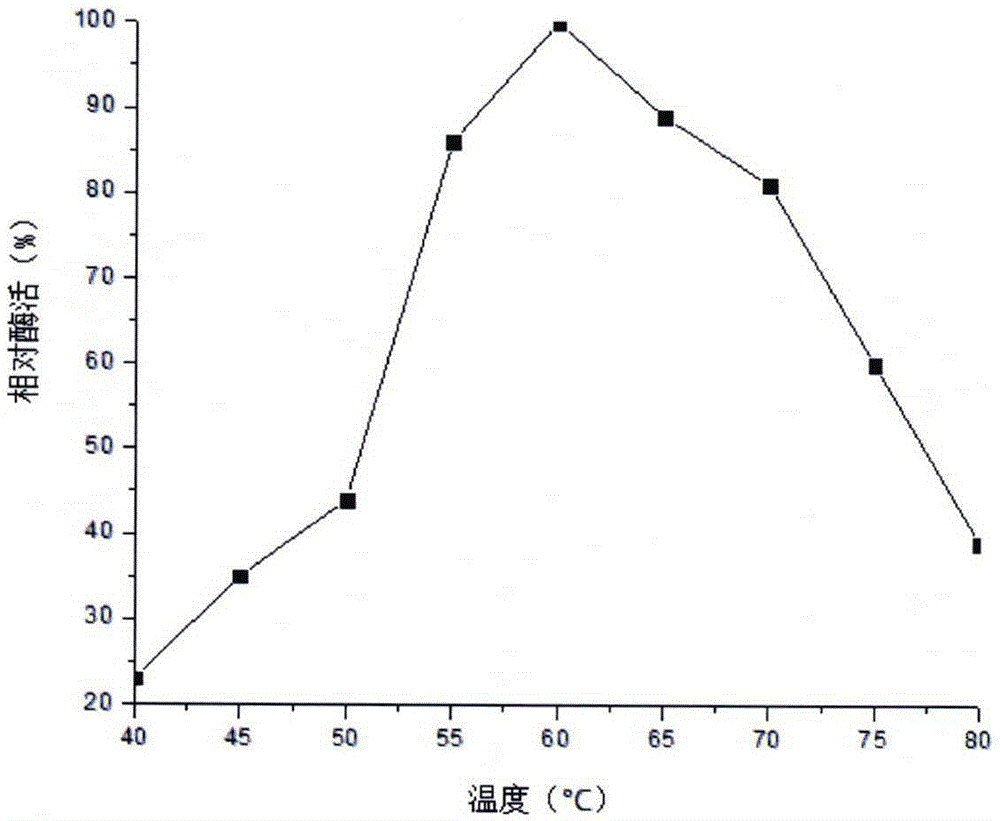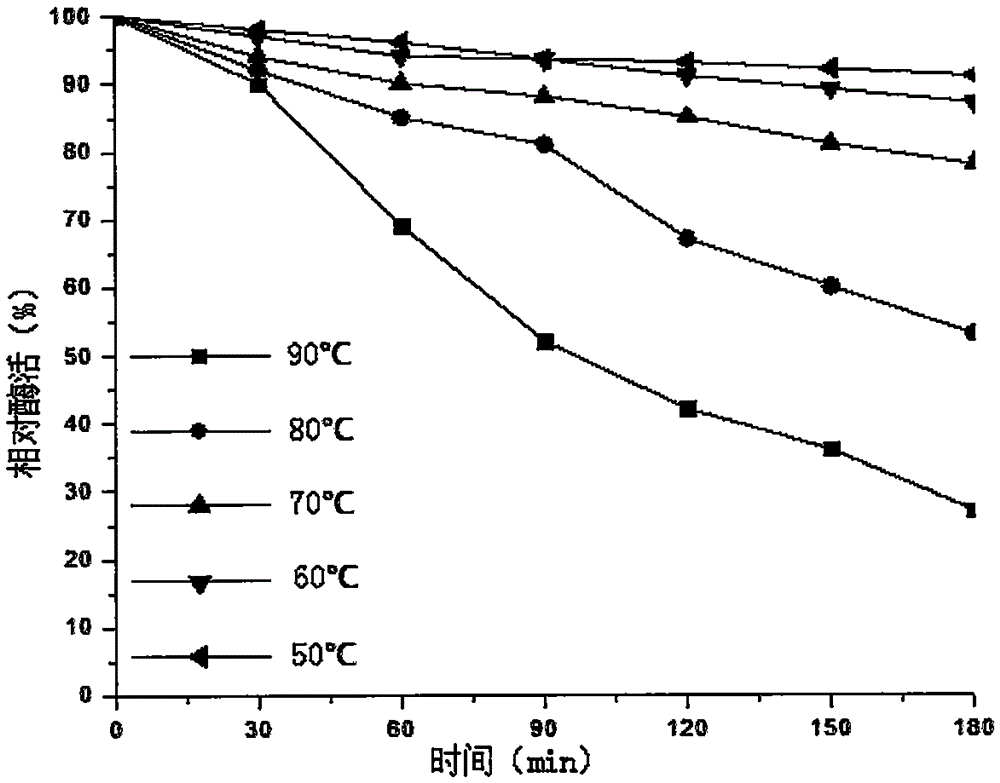Bacterial strain producing high-temperature-resistant beta-galactosidase and screening method thereof
A technology of galactosidase and screening method, applied in the field of biochemical industry, can solve the problem of strain separation without clear data, etc., and achieve the effects of excellent thermal stability and good stability
- Summary
- Abstract
- Description
- Claims
- Application Information
AI Technical Summary
Problems solved by technology
Method used
Image
Examples
Embodiment 1
[0029] Example 1: Screening of strains producing thermostable β-galactosidase.
[0030] A kind of screening method of the bacterial strain that the present invention proposes produces high-temperature resistant β-galactosidase, it is characterized in that comprising following specific steps successively:
[0031] (1) Sample collection: Take some soil from hot springs and dairy farms;
[0032] (2) Primary screening: put 1g of soil sample in 10ml of distilled water, mix it evenly and do gradient dilution, pipette 120μL of bacterial solution and spread it evenly on the screening medium plate, and place it in a 30°C incubator for 24-48h; Pick a single colony with a blue hydrolysis circle on the screening medium plate and streak it, and streak it 3 times repeatedly to obtain a pure culture. Streak 1-3% on a solid medium at 35°C and culture at 35°C for 48 hours , take 3-5 single colonies and culture them in liquid medium at 35°C for 24 hours, take 1-3% of them and inoculate them in s...
Embodiment 2
[0036] Example 2: Morphological and physiological and biochemical characteristics of a strain producing thermostable β-galactosidase.
[0037] After the β-galactosidase producing bacterial strain obtained by the screening method of the present invention was cultivated on beef extract protein medium plate for 24 hours, the colony and the thalline morphology were observed, the surface was rough, the edges were irregular, the colony was dirty white, Gram Positive staining; the shape of the bacteria is short rod rod; the size of the bacteria is 0.65-0.7 μm and 2.5-3 μm; endophytic spores are formed in the center of the bacteria, and the bacteria do not expand after the formation of the spores; the bacteria have no capsule, Peripheral flagella, the bacteria have motility; Gram-positive; grow in liquid medium, form wrinkled ether; cellulolysis test is negative; in sugar fermentation test, the strain can utilize soluble starch, glucose, fructose , lactose, xylose, maltose and sucrose...
Embodiment 3
[0041] Example 3: The enzymatic characteristics of the thermostable β-galactosidase produced by the strain.
[0042] 1. The optimum temperature for β-galactosidase:
[0043] After fermentation, the enzyme liquid was centrifuged to remove bacteria, and the supernatant was taken as crude enzyme liquid for preliminary research on enzymatic properties. The optimal reaction temperature of the enzyme refers to the relative enzyme activity at different temperatures, the reaction pH 7.0, and the highest enzyme activity as 100. The results show that the optimum reaction temperature of the enzyme is 65°C, and at the same time, the enzyme has high catalytic activity and strong adaptability in a relatively high temperature range.
[0044] 2. Thermal stability of β-galactosidase:
[0045] Place the crude enzyme solution of β-galactosidase at different temperatures (30°C, 40°C, 50°C, 60°C, 70°C) and pH 7.0, keep it warm for 180min, and take samples every 30min to measure the enzyme activi...
PUM
 Login to View More
Login to View More Abstract
Description
Claims
Application Information
 Login to View More
Login to View More - R&D
- Intellectual Property
- Life Sciences
- Materials
- Tech Scout
- Unparalleled Data Quality
- Higher Quality Content
- 60% Fewer Hallucinations
Browse by: Latest US Patents, China's latest patents, Technical Efficacy Thesaurus, Application Domain, Technology Topic, Popular Technical Reports.
© 2025 PatSnap. All rights reserved.Legal|Privacy policy|Modern Slavery Act Transparency Statement|Sitemap|About US| Contact US: help@patsnap.com



